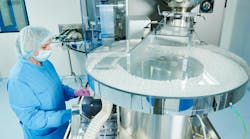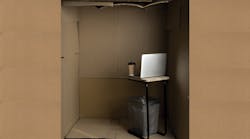In 2012, a fungal meningitis outbreak in the United States was traced to a compounding pharmacy in the Northeast. The pharmacy distributed contaminated vials to medical facilities in 23 states. These were administered to more than 14,000 patients before anyone linked symptoms to the tainted medication.[1]
By the time the source was isolated and the drug recalled, 48 people had died and 720 required treatment for persistent fungal infections. Investigators later discovered both procedural shortcuts and significant failures in cleaning and maintenance at the pharmacy.
This is not an isolated instance of inadequate cleanroom sanitation. The FDA maintains a well-populated list of inspections and citations conducted between 2006 and 2012 on its website.[2] During this period, approximately one out of six infractions arose from failure to meet cleaning and sanitation standards.
Responding to regulatory audits and inquiries can cause significant disruption of a company’s operations. However, improper sanitation in cleanrooms and other critical GMP areas can have tragic results.
Every cleanroom requires a carefully controlled environment maintained in keeping with Good Manufacturing Practices to prevent contamination. While proper air filtration, careful lab design and well-designed operating procedures establish cleanliness levels, thorough routine sanitation and environmental monitoring assures that quality production continues without interruption.
Strict adherence to cleaning standards is especially vital in GMP spaces since most contaminants are microscopic. A single microbe in a batch of drugs could cause the entire output to be quarantined or discarded, leading to product recalls or FDA action with steep financial implications.
Although procedures vary based on each cleanroom’s purpose and the standards required, there are some universal myths and facts that can inform strategies for optimal cleanroom maintenance.
Myth #1: Anyone can clean and maintain a cleanroom environment
Every successful company should be cautious with operating costs. Tasking current employees with cleanroom upkeep might seem like the most cost-effective maintenance plan. While such simplification is tempting, it poses a number of problems:
- Employees already working in the cleanroom may be familiar with equipment and work done there, but lack training in effective and efficient cleaning methods.
- Adding custodial responsibilities for cleanroom staff takes time away from their primary job function and can lead to complacency.
- Do you really want your six-figure PhD cleaning up after each production batch?
The maintenance of cleanroom and GMP areas must meet stringent sanitation requirements. These include equipment-appropriate cleaning agents, methods and products, as well as suitable frequencies of cleaning for various surfaces. The work can be difficult and time-consuming because it must be performed by cleaners wearing protective garments, gloves, boots, eyewear, masks and head coverings.
Most janitorial companies are not trained to clean under these conditions or to meet the rigid requirements for proper cleaning and documentation in such controlled environments. This can lead to failed inspections or potentially disastrous contamination.
When it comes to cleanrooms, if it wasn’t documented, it didn’t happen.
Fact #1: Cleaning staff must be rigorously trained in Good Manufacturing Practice
Using an outside contractor specially trained in GMP solves both of the above problems. Regimented cleaning protocols carried out with contractual accountability and third-party validation can produce consistent high-quality service. In addition, this can avoid costly citations and production interruptions.
When choosing a cleanroom service provider, evaluate their human resource and training processes to ensure adequate training occurs before a cleaner ever steps foot on site.
A good cleanroom service provider has:
- Clear guidelines in place to train new staff in GMP methods to meet and adhere to Standard Operating Procedures (SOP) and integrate documentation into the cleaning routine.
- Periodic refresher training to keep staff up-to-date on new methods and makes sure everyone is working to meet the highest standards of Quality Assurance and Environmental Health and Safety
- Clear supervision and low worker turnover maximize cleaning consistency and regulatory compliance.
Myth #2: A checklist of tasks is adequate information for cleaning staff
Cleaning staff need much more than a checklist. They must know the unique purposes of cleanroom operations to understand the need for the strict cleaning protocols and the potential consequences of any contamination
.
A specialized cleaning contractor can help clients determine the best procedures and frequencies to keep the right levels of cleanliness. With an informed understanding of the reasons for sanitation processes and documentation requirements, they can also be partners in maintaining high standards. A contractor will also work to ensure that the cleanroom remains operational, safe, productive and meets quality standards.
Fact #2: Cleanrooms require a well-developed and implemented Standard Operating Procedure
Designing an effective SOP can keep the cleanroom running efficiently. While manufacturers typically design these procedures to facilitate lab functions, including a maintenance specialist early in the process can keep the cleanroom operational and reduce interruptions.
Cleanroom maintenance offers distinct challenges because of the sensitivity of the tasks performed in the room. The environment, process, tools and people in a cleanroom generate contaminants on an ongoing basis. These become nearly invisible airborne particles with the potential to settle in critical areas.
Regular disinfection and contaminant control is necessary to keep these within prescribed guidelines. The cleaning process must be designed specifically to remove particles instead of spreading them from one surface to another in the cleanroom.
An effective cleaning schedule and pattern for documenting maintenance tasks minimizes interruptions to technical processes and provides verifiable cleaning documentation to avoid time-consuming FDA audits.
Myth #3: Cleaning and maintenance have no impact on capital investment
It’s fairly standard practice for business investment and equipment purchases to occur as an independent process. However, keeping capital outlays and custodial considerations in separate silos is a mistake. The cleaning and maintenance program of a cleanroom and its equipment can have a huge impact on the cost associated to maintain and validate the state of the GMP. Working with a cleanroom service provider before purchasing or installing equipment can save money by decreasing the difficulty of cleaning tasks and avoiding problematic room arrangement.
A collaborative approach can help manufacturers:
- Place non-product-contact equipment and components outside of controlled environments where cleaning protocols are not as strict.
- Ensure that design and flow of the environment is conducive to operations and maintenance to allow easy access to deionized water and other needed resources.
- Minimize the potential for accidental disruption of production by placing sensitive control panels away from traffic areas and cleaning access points.
- Update maintenance procedures for new equipment and its requirements.
Fact #3: The design of protocols and frequency of cleanroom cleaning have a direct impact on product quality and operating costs
Each cleanroom is a distinct space with unique cleaning requirements dependent on its specific application. The maintenance tasks within the cleanroom should reflect the individualized uses of specific equipment and surfaces. Haphazard cleaning and inadequate frequency can lead to:
- reduced product yields
- excess waste of resources
- compromised experiments or products
- ultimately, higher operating costs
Haphazard cleanroom maintenance can be costly on many levels. Designing effective SOPs can keep the cleanroom running efficiently, and taking a collaborative approach with an outside contractor specially trained in GMP can help accomplish these goals. The right collaboration will not only minimize risk, but also allow your company to keep focused on its organizational mission.
Checklist for Choosing Cleaning Service Providers:
• Learn about their GMP training methods
• Verify compliance with specified ISO cleanroom standards and their Quality Management System (QMS)
• Determine documentation and record-keeping practices
• Review their CAPA (Corrective Action Preventative Action) process
Key Elements of an Effective Cleanroom Maintenance SOP:
• Purpose and target audience for guidelines
• Equipment and materials that meet cleanroom ISO classification and requirements
• Cleaning and disinfecting solutions
• Cleanroom mop heads, sponges, wipes, buckets and other lint-free equipment
• Cleanroom HEPA/ULPA filtered vacuum cleaners
• Protective coverings for shoes, clothing, head and face and other relevant gowning
• Cleanroom tasks — frequency varies
• Cleaning of all horizontal and vertical work surfaces in the controlled environment
• Vacuuming of doors, floors, ceilings and work surfaces
• Emptying of appropriate trash and waste receptacles
• Cleaning of production and non-production areas including lockers in the pre-staging and gowning areas using approved cleaning solutions
• Mop gowning areas and cleanroom floors
• Alternate cleaning agents periodically
• Documentation
• Consistent and legible record keeping practices
• Compliance with FDA requirements and forms
• Oversight and quality control
• Include references to internal quality assurance and safety manual.
ABOUT THE AUTHOR
Omar Lopez, MBA serves as vice president, West Region, for Pristine Environments Inc., which specializes in managing, maintaining and optimizing performance at mission-critical facilities across North America. For information about the cleanroom maintenance services offered by Pristine Environments, visit pristine-environments.com.
REFERENCES
1. Inspections and Actions at Compounding Pharmacies http://www.fda.gov/Drugs/GuidanceComplianceRegulatoryInformation/PharmacyCompounding/ucm339771.htm
2. Food and Drug Recalls http://www.fda.gov/Safety/Recalls/default.htm




